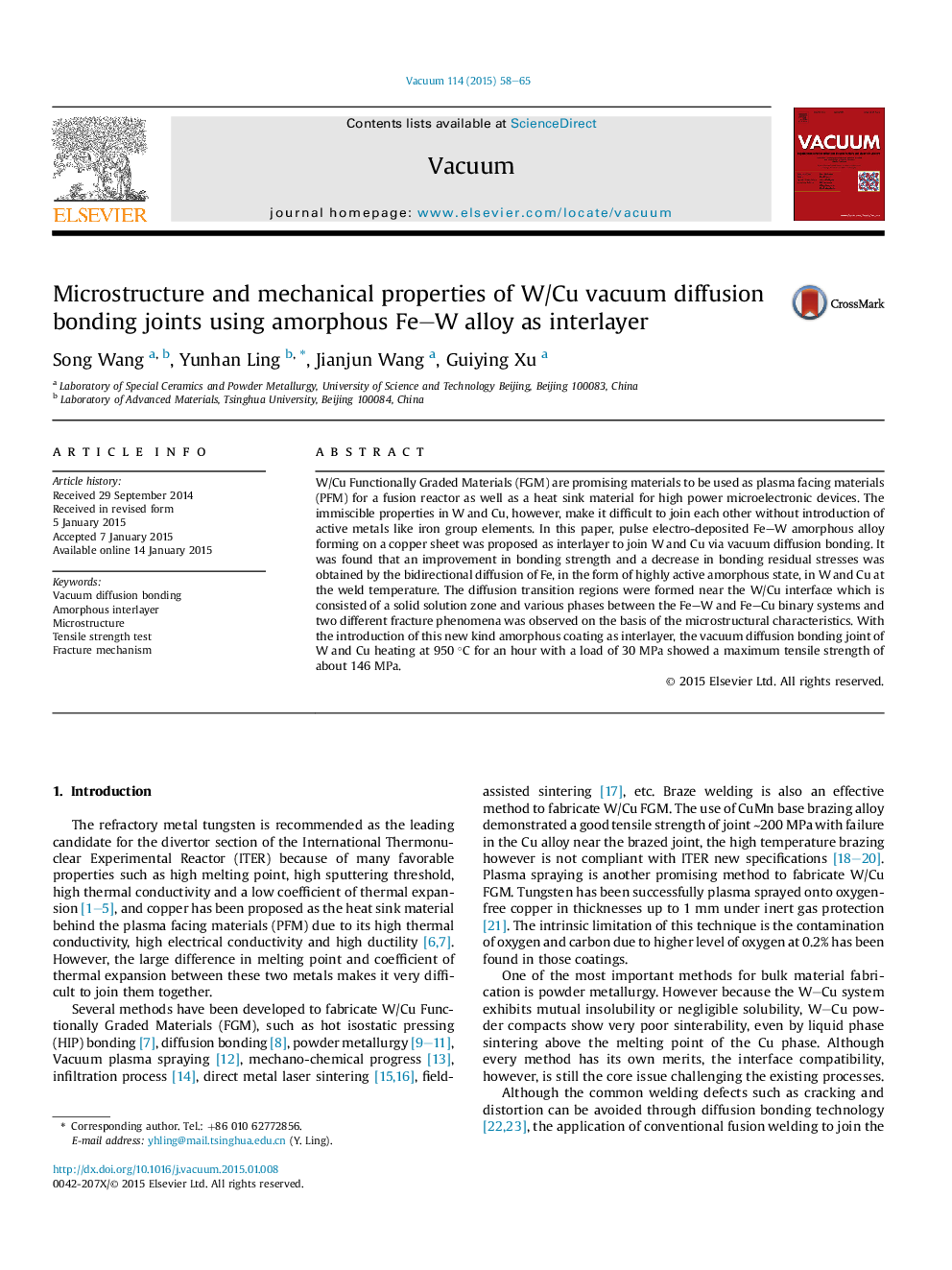| Article ID | Journal | Published Year | Pages | File Type |
|---|---|---|---|---|
| 1689759 | Vacuum | 2015 | 8 Pages |
•Bonding W and Cu was achieved by vacuum diffusion bonding.•The interfaces of the W/Cu were introduced and analyzed.•The bonding strength was analyzed by tensile test.•The cracks take place by two different mechanisms: brittle fracture and ductile fracture.•The large size W/Cu-PFM specimens have been successfully.
W/Cu Functionally Graded Materials (FGM) are promising materials to be used as plasma facing materials (PFM) for a fusion reactor as well as a heat sink material for high power microelectronic devices. The immiscible properties in W and Cu, however, make it difficult to join each other without introduction of active metals like iron group elements. In this paper, pulse electro-deposited Fe–W amorphous alloy forming on a copper sheet was proposed as interlayer to join W and Cu via vacuum diffusion bonding. It was found that an improvement in bonding strength and a decrease in bonding residual stresses was obtained by the bidirectional diffusion of Fe, in the form of highly active amorphous state, in W and Cu at the weld temperature. The diffusion transition regions were formed near the W/Cu interface which is consisted of a solid solution zone and various phases between the Fe–W and Fe–Cu binary systems and two different fracture phenomena was observed on the basis of the microstructural characteristics. With the introduction of this new kind amorphous coating as interlayer, the vacuum diffusion bonding joint of W and Cu heating at 950 °C for an hour with a load of 30 MPa showed a maximum tensile strength of about 146 MPa.
